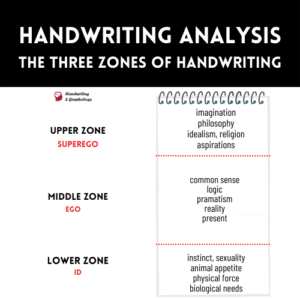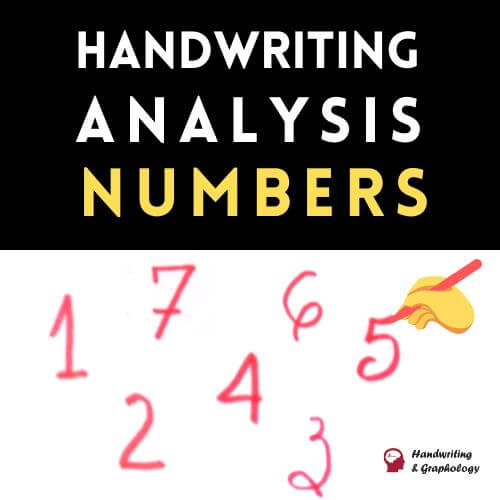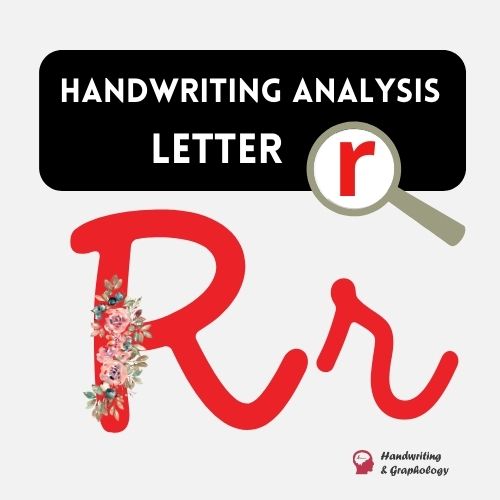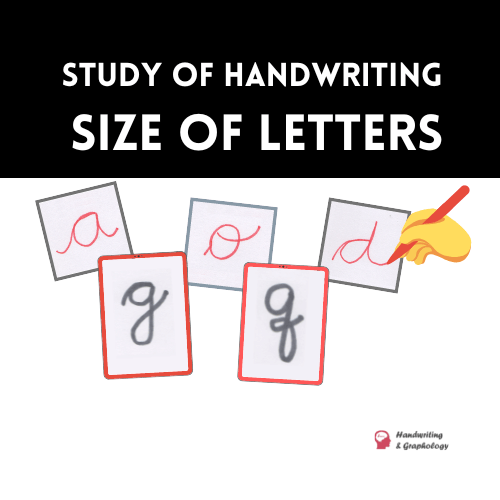Exploring the Relationship Between Writer’s Attention, Willpower, and Written.
Although graphological analysis helps in understanding the writer’s personality, it’s not always essential to do it comprehensively. It depends on the evaluation’s objective. When analyzing a handwritten text, studying every aspect isn’t necessary; we can focus on specific criteria. In graphology, what serves us the analysis of the dots of the “i” and the bars of the “t”? This article explores the relationship between the writer’s attention and willpower, and written expression: Handwriting analysis: Letter “i” and Letter “t”
Understanding the Significance of Attention in Cognitive Functioning
Attention is a cognitive process that allows us to focus on certain stimuli or information. It involves the ability to concentrate on something specific while ignoring distractions. In summary, attention serves us to guide, select, maintain, and process important information correctly.
Attention is crucial in numerous daily activities, from simple tasks like reading a book to more complex activities like solving mathematical problems or engaging in conversation. It is considered a fundamental component in cognitive functioning and plays a significant role in perception, memory, learning, and decision-making.
Attention, concentration, and memory are interconnected in our thinking. When we focus on something, a situation, a sound, or an image, we can maintain our attention thanks to our ability to concentrate. This depends on several aspects:
- Our level of interest in the topic or situation.
- Our willingness to stay focused.
Understanding the Dynamic Nature of Attention: Factors Influencing its Activation and Intensity
Our ability to pay attention can change for various reasons, including our personality and emotional state. Factors such as our mood, whether we feel sad or excited, if we’re tired or stressed, or if we have mental health issues like addictions, can affect our attention. Our attention is activated when we become interested in something, whether it’s because we want to learn more about it, impress others, or fulfill our responsibilities. This attention is intensified by our curiosity, which is essential for learning new things. Attention is crucial for remembering things, as we need to focus on a topic for a while to retain it in our memory. That’s why it’s an essential element of our thinking. To pay attention means, at the same time, to perceive and understand. To understand something, we need to recall other knowledge, relate it, compare it, and evaluate it. Attention always goes hand in hand with willpower, especially when we need to focus on something. When we pay attention:
- We focus on something specific.
- We choose what’s important at that moment.
- We maintain that focus for as long as necessary.
- We also resist distractions and can shift our focus if necessary.
Unlocking the Power of Attention and Willpower: Insights from Graphology
Attention and willpower are closely related. Attention involves directing our thoughts and energy towards something specific, while willpower helps us maintain that attention persistently. In other words, willpower is crucial for sustaining our attention on a particular topic, especially when facing distractions or the temptation to shift our focus. The ability to resist these distractions and stay focused on what we consider important is a manifestation of our willpower in action. Therefore, attention and willpower work together to help us concentrate on what we want to perceive and understand.
According to M. Xandró in his work “Superior Graphology,” the primary indicator of attention and precision is the smallest sign: the dot. The placement of dots reveals both precision and carelessness. Additionally, indicators of attention and precision include well-positioned punctuation marks, correctly drawn and clearly distinguishable letters, and a certain regularity in writing style. Carelessness and forgetfulness, such as the absence of a i-dots or in the t- bars, as well as the involuntary omission or repetition of letters and words, indicate a lack of precision and attention. According to A. Vels in the “Dictionary of Graphology,” “In general, putting a dot accurately and precisely is to specify and be exact in judgments, observations, and obligations.”
Understanding the Psychological Insights Revealed by the Letter “i”
The letter “i” doesn’t usually reflect all emotions, even though it’s located in the middle zone of handwriting. However, it gives us an idea about the creativity of the writer, their intellectual acuity, cultural level, and desire to progress. It also shows a connection with reality and practicality, indicating how the person adapts to different situations.
The vertical stroke of the “i” represents the basis of activity and argument, while the dot expresses thought.
The dot of the “i” reveals the writer’s different emotional states: anguish, inhibition, shyness, obsession, depression, fears, childhood conflicts, anxiety, etc. It also shows attitudes towards life, such as idealism, materialism, positivism, and religious beliefs, as well as intellectual characteristics such as mental agility, precision, attention to detail, sense of duty, thoroughness, and scientific spirit, or behavioral alterations such as negligence, laziness, frequent forgetfulness, apathy, disorder, and distraction.
Unveiling the Power Within: Understanding Will and Volitional Energy through Graphology
Will. Volitional Energy: Concept
Willpower is the intention or resolution that drives us to do things. Analyzing the lowercase letter “t” provides a wide range of possibilities for understanding the writer’s will, as well as information about their behavior and their struggle to achieve their goals and maintain their opinions firmly. This letter summarizes the relationship between ideals, action, and consequences, allowing us to determine if the planned objectives are achieved. It also provides clues about the temperament and character of the individual, their internal conflicts, and the barriers they face in fully developing their personality. Additionally, it reveals the level of decision-making, independence of thought, life outlook (realistic or idealistic), level of intelligence (logical or intuitive), ability to relate, firmness in ideas, and impulsivity in actions.
According to A. Vels in the Dictionary of Graphology: “Having willpower is having energy and sufficient self-control to move from a clear and objective idea to the achievement of the goal pursued.” The letter “t” is known as the letter of willpower. It travels in two opposite directions:
• From top to bottom when drawing the stem: personal affirmation, degree of inner energy.
• From left to right to draw the bar: reflects the expansive power of will in action.
According to M. Xandró, “volitional flow is not only reflected in the letter “t,” but the driving force toward personal achievements is observed in all horizontal movements, such as in “r,” the tilde of “ñ,” “b,” “v,” and “s.“
Exploring the Emotional Language of “i” and “t” in Graphology
The comparison between what both lowercase letters, “i” and “t,” reflect lies in the fact that both provide information about the emotions, attitudes, and characteristics of the individual writing them. Both the stroke of the “i” and the “t” offer clues about creativity, adaptability, level of emotionality, decision-making, firmness of beliefs, and other aspects that reveal a lot about the writer. Additionally, both letters allow for interpreting the relationship between the individual’s ideals and actions, as well as their efforts to achieve their goals and their level of personal fulfillment.





